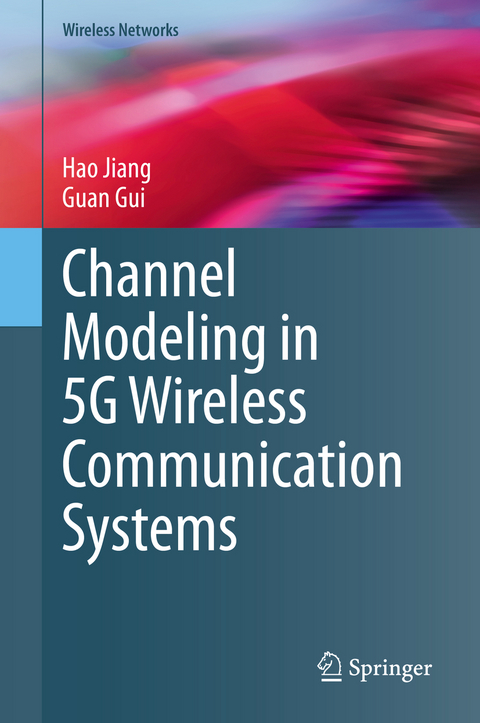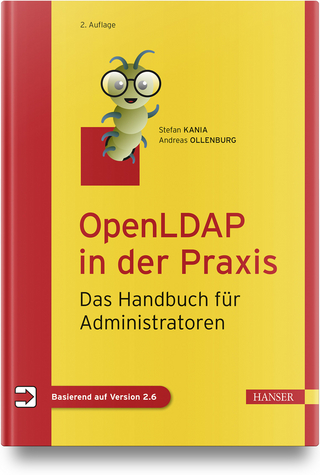
Channel Modeling in 5G Wireless Communication Systems
Springer International Publishing (Verlag)
978-3-030-32868-9 (ISBN)
This book addresses the fundamental design and technical challenges for fifth generation (5G) wireless channel models, including multi-frequency bands and multi-scenarios. The book presents a strong vision for 5G wireless communication networks based on current market trends, proven technologies, and future directions. The book helps enable researchers and industry professionals to come up with novel ideas in the area of wireless heterogeneity, to minimize traffic accidents, to improve traffic efficiency, and to foster the development of new applications such as mobile infotainment. The book acts as a comprehensive reference for students, instructors, researchers, engineers, and other professionals, building their understanding of 5G and in designing 5G systems.
- Addresses fundamental design and technical challenges for 5G wireless channel models;
- Presents how to create reliable statistical channel models to capture the propagation properties between transmitters and receivers;
- Pertinent to researchers, engineers, and professionals in 5G.
Zaichen Zhang was born in Nanjing, China, in 1975. He received the B.S. and M.S. degrees in electrical and information engineering from Southeast University, Nanjing, China, in 1996 and 1999, respectively, and the Ph.D. degree in electrical and electronic engineering from the University of Hong Kong, Hong Kong, in 2002. From 2002 to 2004, he was a Post-Doctoral Fellow with the National Mobile Communications Research Laboratory, Southeast University, China. He joined the School of Information Science and Engineering, Southeast University, China, in 2004, where is currently a Professor. He has published over 200 papers and holds 30 patents. His current research interests include 6G mobile information systems, optical wireless communication technologies, and quantum communications. Hao Jiang received the B.S. and M.S. degrees in electrical and information engineering from the Nanjing University of Information Science and Technology, Nanjing, China, in 2012 and 2015, respectively. From 2017 to 2018, he was a Visiting Student in the Department of Electrical Engineering at Columbia University in the City of New York, New York, NY. He received the Ph.D. degree in the National Mobile Communications Research Laboratory, Southeast University, Nanjing, China, in 2019. His current research interests are in the general area of vehicle-to-vehicle communications, massive multiple-input and multiple-output channel modeling, signal processing, communications, machine learning, and AI-driven technologies. Guan Gui received the Dr. Eng. degree in information and communication engineering from University of Electronic Science and Technology of China (UESTC), Chengdu, China, in 2012. From October 2009 to March 2012, with the financial supported from the China scholarship council (CSC) and the global center of education (ECOE) of Tohoku University, he joined the wireless signal processing and network laboratory (Prof. Adachi's laboratory), Department of Communications Engineering, Graduate School of Engineering, Tohoku University as for research assistant as well as postdoctoral research fellow, respectively. From September 2012 to March 2014, he was supported by Japan society for the promotion of science (JSPS) fellowship as postdoctoral research fellow at same laboratory. From April 2014 to October 2015, he was an Assistant Professor in Department of Electronics and Information System, Akita Prefectural University. Since November 2015, he has been a full professor with Nanjing University of Posts and Telecommunications (NUPT), Nanjing, China. He is currently engaged in research of wireless communications, deep learning and signal processing. Dr. Gui has been editors for IEEE Transactions on Vehicular Technology (2017~), IEEE Access (2018~), and KSII Transactions on Internet and Information Systems (2017~) as well as security and Communication Networks (2012~2016). He also served as the symposium chair and TPC member for many conferences such as GLOBECOM, ICC, WCNC, VTC, ICNC and so on. He received seven international conference best paper awards: ICC2014, VTC2014, ICC2017, ICNC2018, ADHIP2018, CSPS2018, ICEICT2019. He is an IEEE senior member.
Introduction.- Emerging Technologies and Evaluation Challenges for 5G.- 5G Channel Modeling.- Geometry-Based Statistical MIMO Channel Model.- 3D Scattering MIMO Channel Model.- Street V2V Channel Model.- 3D Massive MIMO Channel Model for V2V Communication Environments.- 3D Non-stationary Wideband Channel Model for V2V Communication Environments.- 3D UAV Channel Modeling using AoD and AoA Estimation Algorithm.- Future Research Directions.- Conclusion.
| Erscheinungsdatum | 05.12.2019 |
|---|---|
| Reihe/Serie | Wireless Networks |
| Zusatzinfo | XVI, 194 p. 86 illus., 38 illus. in color. |
| Verlagsort | Cham |
| Sprache | englisch |
| Maße | 155 x 235 mm |
| Gewicht | 488 g |
| Themenwelt | Mathematik / Informatik ► Informatik ► Netzwerke |
| Technik ► Elektrotechnik / Energietechnik | |
| Technik ► Nachrichtentechnik | |
| Schlagworte | 5G wireless communication networks • multi-frequency bands and multi-scenarios • Statistical channel models • UAV communications • V2V communications |
| ISBN-10 | 3-030-32868-6 / 3030328686 |
| ISBN-13 | 978-3-030-32868-9 / 9783030328689 |
| Zustand | Neuware |
| Informationen gemäß Produktsicherheitsverordnung (GPSR) | |
| Haben Sie eine Frage zum Produkt? |
aus dem Bereich


